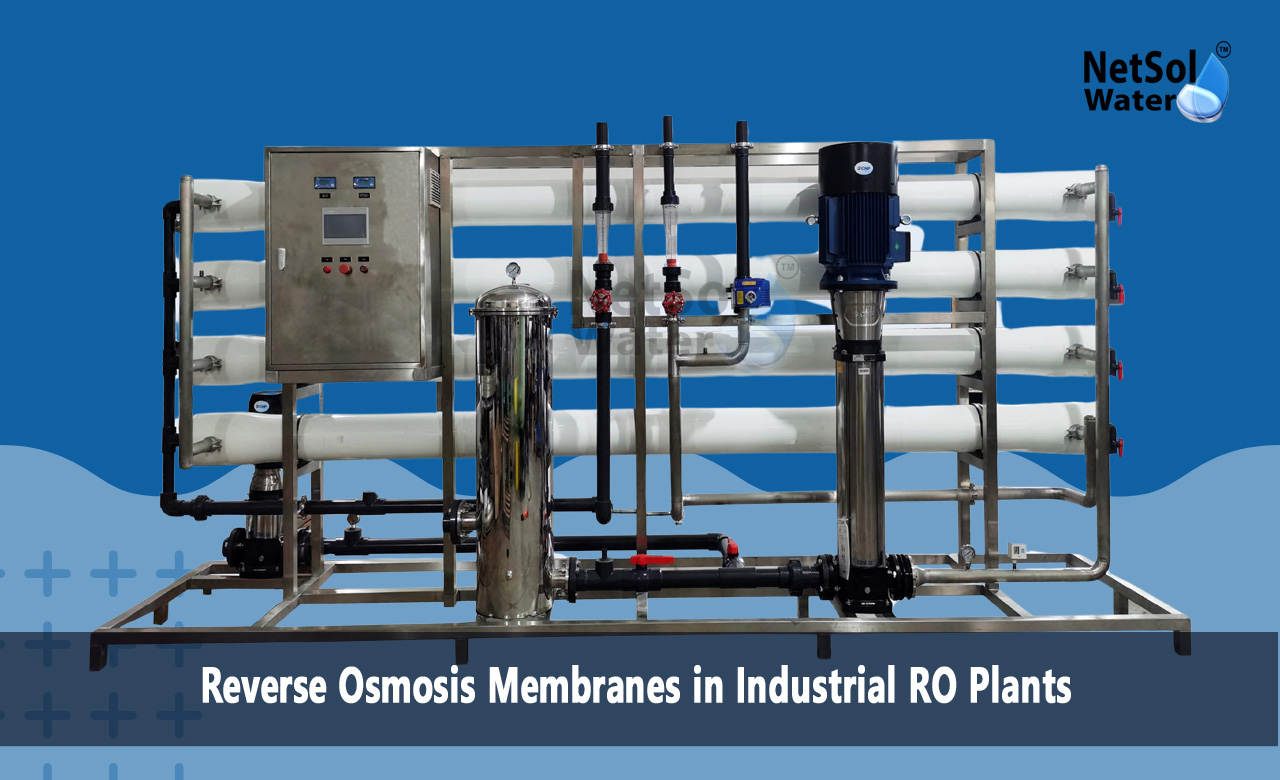How to Select RO Membranes in Industrial RO Plants?
Many sectors now require treated water of high purity. They use water for cooling for cleaning for chemical processes and for product quality. They must remove dissolved solids, microbes and organic matter to meet regulations. Reverse osmosis offers a proven path to achieve this level of purity. It relies on membranes that block unwanted materials. The membrane surface only lets water molecules to pass under pressure. Each membrane within an RO unit adds another layer of protection for water quality. Choosing the right membrane matters for plant performance cost and lifespan. Engineers also focus on energy use when they design each system. Energy use remains a key concern in RO plant design. Engineers measure power draw per unit of water to balance cost and output. Pretreatment steps such as sand filtration chemical dosing and pH adjustment protect membranes. Proper pretreatment extends membrane life and cuts maintenance work.
Understanding Reverse Osmosis Membranes
Choosing the right membrane begins with understanding how each type works. Each membrane offers unique performance and cost features. Good knowledge of these components helps to build a system that meets goals for water quality and recovery. Let us have a look at some main membrane types and their traits.
Polyamide Thin Film Composite Membranes
Polyamide thin film composites deliver high salt rejection and good flux. They suit applications that need very pure water and high throughput. These membranes work under moderate pressure and can handle many feed waters. They may need more careful cleaning and pretreatment.
Cellulose Acetate Membranes
Cellulose acetate membranes show good biofouling resistance and lower cost. They work best at lower pH and lower temperatures. They also need less aggressive cleaning. However they may not match the salt rejection of polyamide.
Factors to Consider in Membrane Selection
Selecting a membrane for an industrial RO plant depends on many factors. These factors affect the system performance cost and maintenance. Clear understanding of each factor helps choose the best product for a given site. Let us have a look at some key factors that matter.
Feed Water Quality: The feed water quality sets the stage for membrane choice. Water with high levels of suspended solids or organics may need more pretreatment. Hard water requires scale control to protect membranes. Soft water allows membranes to perform near full capacity.
Operating Pressure and Temperature: Membranes require a range of pressure and temperature to work at optimum levels. High temperature can boost flux but may reduce membrane life. Low pressure can lower recovery and increase cost per volume of water treated.
System Recovery and Rejection Rate: The recovery rate defines the percentage of cleaned water from feed water. A higher recovery rate cuts water waste but raises fouling risk. The rejection rate defines how well the membrane removes salts. Both rates must align with system goals.
Membrane Module Configurations
The layout of membrane modules shapes the flow path and affects cleaning and service life. Choosing the right module design can improve efficiency and lower costs. Let us have a look at some popular module types.
Spiral Wound Modules: Spiral wound modules pack membranes in a compact form that maximizes active area. They work well for most industrial RO systems. They allow cross flow that helps remove fouling layers during operation.
Hollow Fiber Modules: Hollow fiber modules use bundles of small tubes to filter water. They offer high surface area and easy cleaning. They also work well in systems with variable feed water quality.
Plate and Frame Modules: Plate and frame modules use flat sheets separated by spacers. They allow simple inspection and replacement of membranes. They work well where frequent maintenance is necessary.
Performance Metrics and Sizing
Measuring membrane performance and sizing the system avoids surprises during start up. Good metrics help engineers plan for output volume and energy use. Let us have a look at some key metrics and sizing steps.
Flux Rate: Flux rate measures the volume of water passing through each square metre of membrane per day. It guides the number of membranes needed for a given output. Systems with high flux may use energy more efficiently.
Salt Rejection: Salt rejection defines the percentage of dissolved salts that membranes remove. Higher rejection means purer water but may lower flux. Engineers must balance both to meet water quality targets.
Membrane Area and System Capacity: The total membrane area determines how much water a system can treat in a day. Designers calculate area needs based on flux rate and desired capacity. They also factor in safety margins for performance drop over time.
Maintenance and Lifespan Management
Proper cleaning and monitoring extend membrane life and keep performance steady. Planning maintenance reduces downtime and lowers cost over the system life. Let us have a look at some best practices for upkeep.
Cleaning Protocols: Membranes need regular cleaning to remove fouling deposits. Cleaning methods vary by feed water type and fouling profile. Engineers schedule clean in place cycles using gentle chemical solutions.
Replacement Schedule: Membrane modules wear out over time. A clear replacement schedule helps avoid sudden drops in performance. Engineers track pressure trends and rejection rates to plan swaps.
Monitoring and Control: Real time monitoring of pressure flow and conductivity helps detect issues early. Automated control systems can adjust feeds and cleaning cycles for best performance. Data logs support long term analysis and system tuning.
Conclusion
An industrial RO plant manufacturer guides project success from design to delivery. Netsol Water acts here as a leading industrial RO plant manufacturer with real project experience. The choice of reverse osmosis membranes influences plant performance cost and lifespan. This blog shows how to pick membranes that meet site needs. Netsol Water can help at every stage.
Contact Netsol Water at:
Phone: +91-9650608473, Email: enquiry@netsolwater.com



